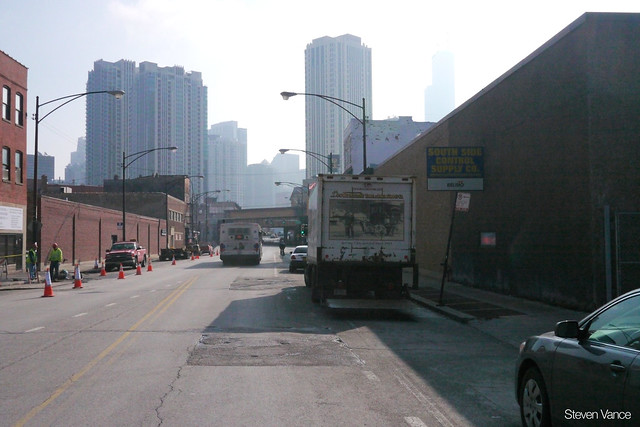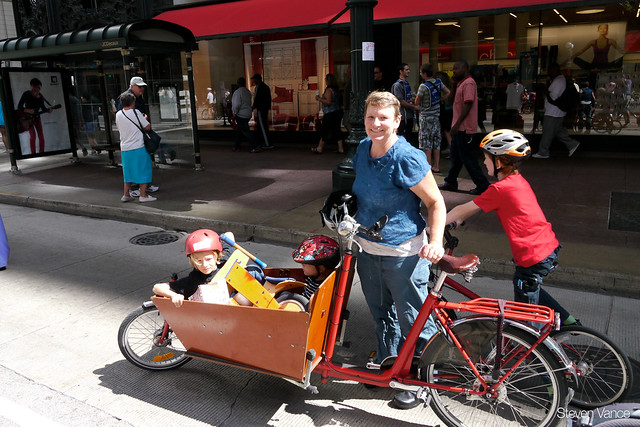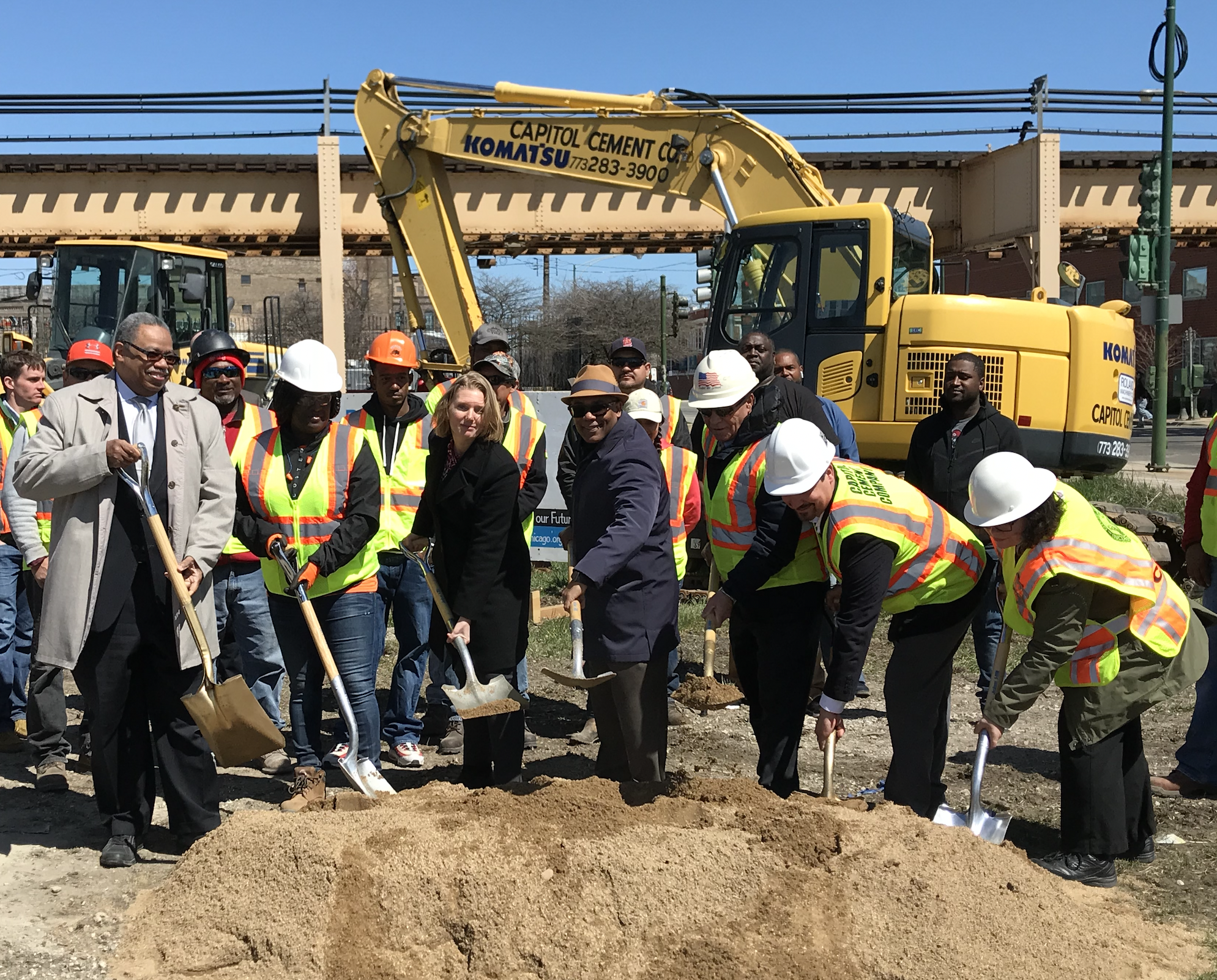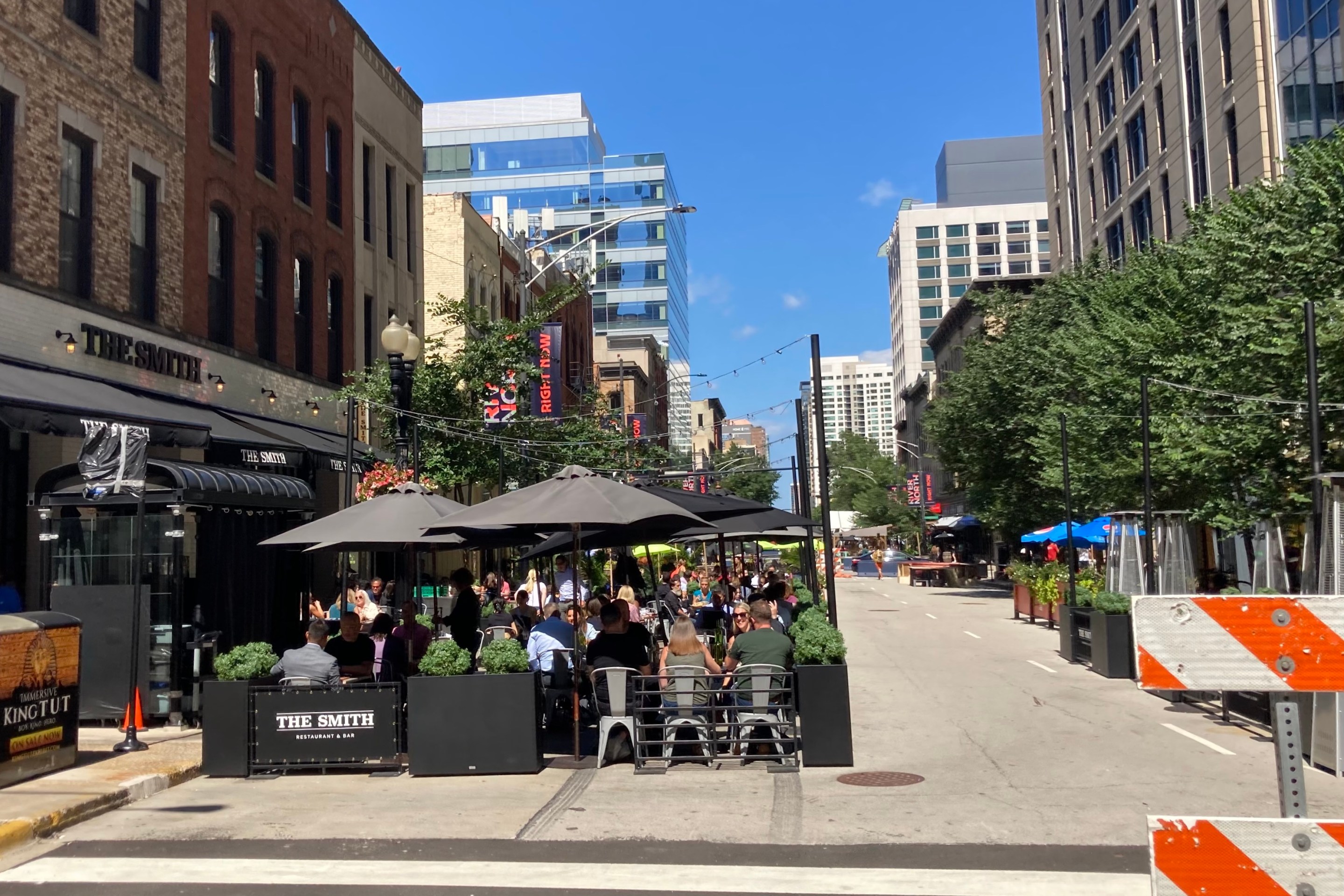The Chicago Department of Transportation is proposing to build a protected bike lane on Milwaukee Avenue in River West, connecting the protected bike lane on Elston Avenue with the protected bike lane on Kinzie Avenue. This project could help many more Chicagoans feel safe enough to bike on city streets, but as we reported earlier this week, the local alderman and some businesses on Milwaukee are uneasy about trading parking spaces for a fully protected bikeway, and CDOT is considering alternating between protected and buffered bike lanes. The businesses shouldn't worry about the redesign: With better parking management and a fully-protected bike lane, Milwaukee will be accessible to more people and customers than it is today.
To make the street truly safe and attract Chicagoans of all ages, the bikeway on Milwaukee needs to be continuously protected, without stretches of buffered bike lane where drivers can double-park. An unbroken protected bike lane is especially important on the stretch between Elston and Kinzie, which would create a safe connection to downtown.
Jennifer James and Doug Hinckley currently ride on Milwaukee, carrying their three sons in a Dutch cargo bike between home in Little Italy and school in Bucktown. But they don't feel safe riding in the street. James uses the Elston protected bike lane, then jumps on the sidewalk where it ends at North Avenue.
She says that the type of bike lane that CDOT builds on Milwaukee will determine how many people will ride there. "Building a lane that's not 100 percent protected requires the kind of rider who's comfortable, if there is such a person, with riding in the door zone and passing double parked automobiles," James said.
According to a survey that helped guide Portland, Oregon's bike strategy, 60 percent of people are "interested but concerned" about cycling: They want to ride but don't feel it's safe enough. Buffered bike lanes won’t get those Chicagoans to shift trips from driving to biking. Trucks and cars will still end up blocking the lane, and the design still puts cyclists at risk of getting doored. Continuous, protected bike lanes, on the other hand, create the sense of safety that entices large numbers of people to bike.
James added that by building a continuous protected bike lane between the two existing bike lanes, Chicago would, for the first time, be building the network it committed to with the Streets for Cycling Plan 2020. "Right now, the Dearborn Street protected bike lane, which my family really likes, is an archipelago because it doesn't connect to Kinzie Street." No protected bike lane in Chicago currently connects to another protected bike lane. (The smallest gap now is a short 0.23 miles between Kinzie and Dearborn, which CDOT has expressed interest in closing.)
Meanwhile, Alderman Walter Burnett's hesitance about the parking loss that would accompany a protected bike lane is misplaced. The double-parking on Milwaukee isn't evidence that every parking spot must be preserved -- it's a sign that we aren't managing parking as well as we should.
Milwaukee does have a pricing problem, with some bad mismatches between curb prices and parking demand. Parking is metered between Green Street and Halsted Street, where there is just a single retail use (the new European sandwich shop Duran), but there are no meters at all between Erie Street and Chicago Avenue, where there are many commercial and retail uses.
"The only parking crunch is for free, long-term storage of private vehicles," said Lindsay Bayley, a senior planner at CMAP.
CDOT's survey into how parking could be consolidated is the right move, and it should also involve looking at how parking is metered. By putting a price on curb parking on the popular sections of Milwaukee, spaces will turn over more frequently, and more customers will have the opportunity to park near their destinations. It will be a de facto increase in the parking supply, making up for the loss of physical spaces. In addition, a business that decides to convert 1-2 car parking spaces to 12-20 bike parking spaces will allow more customers to get to their store.
Preserving parking spaces cannot trump safety and the city's stated goals of growing transit, bicycling, and walking. A continuous protected bike lane can enhance safety and increase access to businesses on Milwaukee, even if many car parking spaces are removed. That's the kind of project Chicago has to build -- not a protected bike lane network filled with gaps -- to get more people on bikes.





